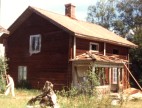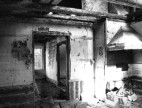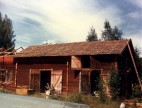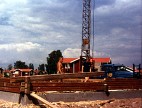Then Laura Lail (Laurie Lyle) who was an opera singer lived on the estate. She was born February 20, 1904 in Oslo and died August 17, 1978 in Kulladal near Malmö. She worked in Germany from 1935 to 1940. After WWII she lived in the USA and England. She made a number of recordings, which still exist on long playing records. Ms. Lail lived in the farmhouse. She was well known in the community because she played and sang for the children in the Västanviks schools.
Lars Backman, a merchant from Stockholm, lived on the estate for a time. He was born June 30, 1941 in Katarina parish.
A book entitled "Västanvik, village of Siljan" provided the following information. The Dean and Court Chaplain, Karl Gustav Ekman and his wife Edit owned the farm until 196 1. There is no record when they bought the property. It is know that they lived in one of the log cabins during the summer months. The cabin has a white round "Roman pillar" which was designed and built by Edit. She had an "aristocratic" lineage.
In 1961 the regional Association for the Deaf from Dalarna purchased the farm. Some years later the national Association for the Deaf from Stockholm built a residential college for adult education. It is still in existence on the farm property. The building was constructed in the area of the small log cabins. However, Eckman's cottage was not disturbed in the construction and it still stands intact.
On June 16, 1978, Anna-Greta and Robert Samuelsson bought the remaining
older buildings on the estate at an auction. They intended to remove the
buildings from the property. The boundaries and remains of a large, grand garden
were still distinctly present. The garden area also had a small pond; it
contained a distinctive fountain that was the center of attention.
 The lot and building site in Gagnef had to be made ready for the
The lot and building site in Gagnef had to be made ready for the




